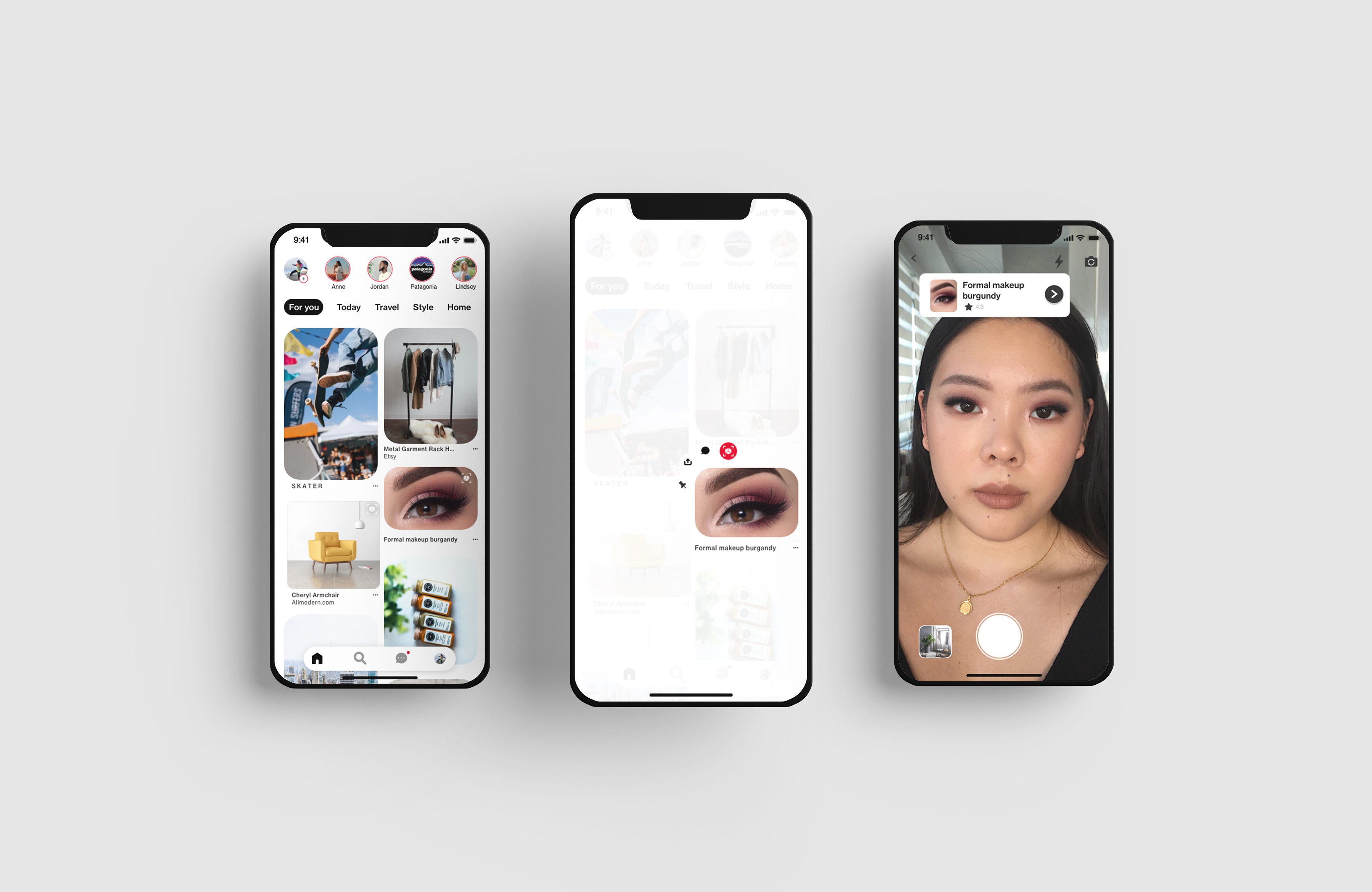The goal for this project was to use evidence based design to understand how we could improve an existing app, keeping in mind thinking about the future and incorporating new technology. Through surveys and interviews, my team discovered that people's main issue with Pinterest currently was the lack of customization available when it comes to sorting your pins and boards. We also found there was interest is Pinterest utilizing AR features, and more elements like stories to bring in a social aspect. Based on this, we implemented three main new features. This app design required our team to be able to understand and follow Pinterest's existing brand guidelines and style. This design was co-created with Ruby Cassidy.
The first feature we implemented was easier sorting for your existing pins. This feature allows users to organize their pins within a board multiple ways, including newest to oldest, oldest to newest, pins with the most favorites, etc. It also allows users to drag to reorder in a separate section if they want to completely customize the order.
The second feature we implemented is a stories feature, very similar to Instagram or Facebook. The benefit of this feature on Pinterest is that users can share projects or creations inspired by things they found on Pinterest, and leave swipe up links to the pin with the instructions they used or their inspiration.
The final feature we added was the augmented reality feature. This feature allows users to view pins in augmented reality quickly and easily. The applications for this range from testing our furniture in your space, to trying on a makeup look, to testing out a new outfit. Most pins in the app will be AR enabled, with a small symbol in the top right corner to notify users the feature is available on that specific pin. When the user sees that symbol, they can access the feature through either the existing shortcut menu on Pinterest, or by clicking to view the pin and then clicking the "try it" button.

